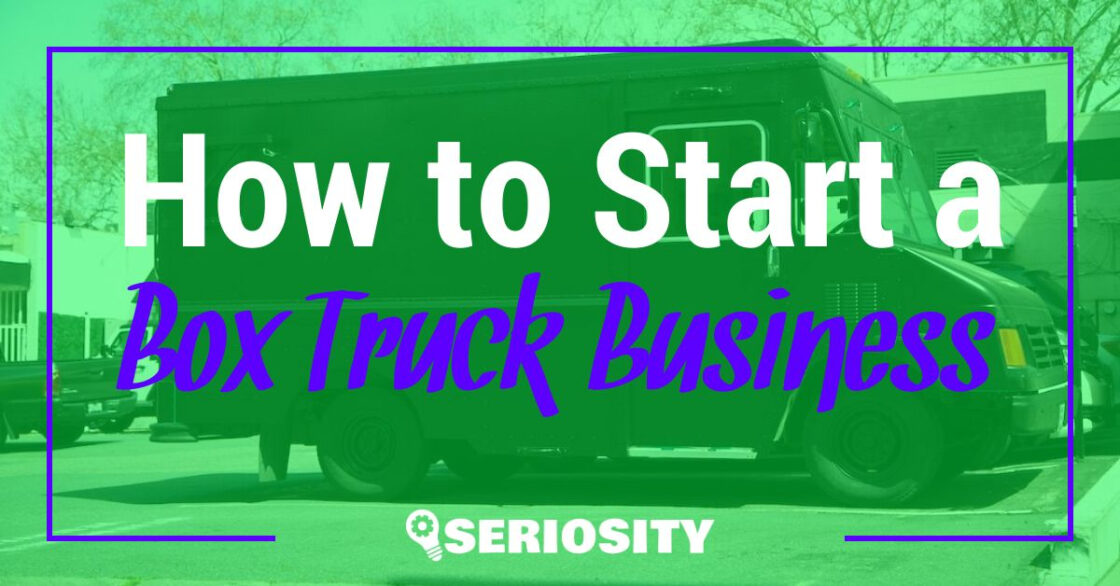Starting a local tour business can be an exciting and fulfilling venture for those passionate about sharing their love and knowledge of a particular area. Before diving into this exciting opportunity, it is important to understand the necessary steps and considerations needed to lay the foundation for a successful tour company. By addressing key aspects such as business registration, permits, and marketing, entrepreneurs can set themselves up for long-term success.
First, it is crucial to determine your tour business’s specific focus and geographic location. Choose an area you are intimately familiar with and have a strong connection to – this will enhance your ability to share unique insights and stories with your customers. Next, explore the legal requirements for starting a tour company in your area by consulting your local tourism board. This may involve registering your business name, obtaining necessary permits or licenses, and signing up for appropriate taxes.
Taking the time to develop a solid business plan, including marketing strategies and growth opportunities, will ensure that your tour company has the structure it needs to thrive. Remember, investing time and effort in planning now will pay dividends as your business takes shape and begins to attract customers from around the world.
Understanding the Tourism Market
Market Research
Before starting a local tour business, it is essential to conduct market research. This involves gathering data on the size, trends, and growth potential of the tourism industry in your area.
- Study local tourism statistics and reports
- Identify potential tourist attractions and destinations
- Investigate factors affecting tourism such as seasonality, local events, and economic conditions
Competition
Analyzing the competition is a crucial step in understanding the market landscape.
- Identify direct competitors offering similar tours or experiences
- Assess their strengths, weaknesses, and unique selling points
- Understand their pricing strategies, marketing channels, and customer reviews
Target Market
Defining your target market helps tailor your tour business to the needs and preferences of specific customer segments.
- Identify common characteristics of potential customers (e.g., age, income, interests)
- Understand their motivations for visiting your area (e.g., leisure, adventure, culture)
- Analyze their spending habits and preferences
Niche
Determining your niche enables you to focus on a specialized market segment, offering unique experiences that distinguish your business from competitors.
- Consider areas of the tourism market that are underserved or unexplored
- Identify opportunities for innovation within the local tour scene
- Develop a unique tour concept that appeals to a specific target audience
Ideal Customer
After establishing your target market and niche, it’s essential to create a detailed customer profile. This helps in designing your tours, marketing strategies, and overall customer experience.
- Identify the demographic, psychographic, and behavioral attributes of your ideal customer
- Understand their preferences for activities, accommodations, and inclusions in a tour
- Gain insight into their decision-making process and sources of information when planning a trip
Legal Requirements and Licensing
Business Structure (LLC, EIN)
When starting a local tour business, you will need to decide on a business structure. Most tour operators choose to form a Limited Liability Company (LLC) as it provides protection against personal liability for company debts and lawsuits. You should also obtain an Employer Identification Number (EIN) from the Internal Revenue Service (IRS) for tax purposes.
- LLC: Offers personal liability protection and flexible tax options.
- EIN: Required for tax reporting and other business transactions.
Business License and Permits
To operate your tour business legally, you will need to acquire the necessary business licenses and permits. These may include:
- General business license: Required to operate a business within a specific jurisdiction.
- Tour operator license: May be necessary depending on your local regulations for tourism businesses.
- Health and safety permits: Ensure you comply with local health and safety regulations.
You should check with your local and state government offices for specific license and permit requirements.
Insurance
Having adequate insurance coverage is crucial for your tour business. Some types of insurance you might need include:
- General Liability Insurance: Protects your company from lawsuits related to injuries, property damage, or accidents that occur during tours.
- Commercial Auto Insurance: Essential if you operate transportation vehicles as part of your tour services.
- Workers’ Compensation Insurance: Protects employees in case of work-related injuries and illnesses.
Local Tour Body
Be sure to consult your local tour body or tourism board for any additional regulations or requirements that may apply to your tour operator business. They may have guidelines for:
- Health and safety procedures
- Advertising and marketing
- Compliance with zoning laws and regulations
Developing Your Tour Business Plan
Mission and Vision
Start by defining your company’s mission and vision statements. The mission statement should reflect your purpose for providing tour services and the desired impact on tourists, while the vision statement portrays the long-term aspirations of your tour business.
Example:
- Mission statement: “To provide unforgettable, immersive travel experiences to tourists, showcasing the hidden gems and rich history of our region.”
- Vision statement: “To become the leading local tour operator and inspire travelers to discover the unique beauty of our area.”
Operations Plan
An operations plan is crucial for the smooth running of your tour business. It outlines the daily activities, resources, and infrastructure required for running the tours. To create an effective operations plan, consider the following steps:
- Define your target audience: Determine your ideal customer demographics, such as age, income levels, and travel preferences.
- Outline tour offerings: Based on your knowledge and research about your target audience, design unique experiences tailored to their interests.
- Determine necessary resources: Identify the tools, equipment, and vehicles necessary for the tours.
- Hire and train staff: Recruit tour guides and other essential personnel, and provide them with proper training to ensure a high-quality experience for tourists.
- Obtain permits and licenses: Check local regulations and obtain any necessary permits or licenses to operate a tour business.
Financial Projections
Financial projections are essential for estimating the profitability of your tour business and planning for future growth. To create accurate financial projections, consider the following components:
- Revenue: Calculate potential earnings by estimating the number of tour bookings and the average revenue per booking.
- Expenses: Include costs such as equipment purchases, vehicle maintenance, employee salaries, and marketing efforts.
- Cash flow: Project monthly cash flow by balancing revenue with expenses.
- Break-even analysis: Determine the point at which your revenue equals your expenses, providing a benchmark for profitability.
- Profit margin: Calculate your company’s profit margin by dividing your net income by your total revenue.
By covering these crucial aspects, your tour business plan will serve as a blueprint for success and help you steer your company toward a prosperous future.
Creating a Strong Brand Identity
Business Name
Choosing the right business name is essential to creating a strong brand identity for your tour company. The name should reflect the type of tours you offer and be easy to remember. Consider your target audience and location while brainstorming ideas. Make sure the name is unique and not too similar to other businesses in the area, as this will help differentiate you from competitors.
Logo and Marketing Materials
A visually appealing, professional logo is key in establishing a strong brand identity for your tour company. Your logo should be consistent with your chosen business name, conveying the essence of your tour offerings. Along with the logo, create marketing materials such as pamphlets, brochures, or business cards that reflect your brand’s visual identity, using a consistent color scheme and font.
Unique Selling Proposition
To stand out among competitors, your tour company needs a unique selling proposition (USP). Your USP should highlight what sets your tours apart, whether it’s in the types of tours offered, the expertise of your guides, or a specific focus on local culture. Clearly communicate your USP on your marketing materials and in conversations with potential customers, as this will help establish your brand as unique and memorable.
Brand Identity
A strong brand identity is essential to any successful tour company. Your brand identity is a combination of your business name, logo, marketing materials, and unique selling proposition. By ensuring these elements are cohesive and reflective of your tour company’s values, you’ll be able to create a consistent and memorable experience for your customers. Stay true to your brand identity in all aspects of your business, including your website, social media presence, and customer interactions. This consistency will help build trust and credibility with your audience.
Designing and Pricing Your Tours
Creating Memorable Experiences
Creating a memorable experience for your customers is essential for any successful local tour business. As a tour operator, it is important to specialize in designing tours that cater to the interests and preferences of your target audience. You can achieve this by:
- Identifying the types of tours that resonate with your audience, such as nature tours, wine tours or adventure activities.
- Collaborating with local businesses, accommodations and the community to provide unique and immersive experiences.
- Providing well-trained tour guides with exceptional knowledge of the local area, history, and culture to further enrich the tourists’ experience.
Tour Pricing
When it comes to tour pricing, it is crucial to determine your costs and set your prices accordingly. Here are some factors to consider when setting your tour prices:
- Equipment maintenance costs (shuttle buses, ropes, helmets, gear, etc)
- Guide and staff salaries
- Training courses for staff
Follow these steps to calculate your tour pricing:
- Calculate the cost of each tour, including fixed and variable expenses.
- Determine a markup price that ensures profitability while remaining competitive in the market.
| Expense Category | Examples | Notes |
|---|---|---|
| Fixed Costs | Rent, insurance, salaries | Expenses that don’t change based on tour size. |
| Variable Costs | Food, entrance fees, fuel | Expenses that change depending on tour size. |
| Profit Margin | Desired profit per tour | Set a percentage or fixed amount. |
Collaborating with Local Businesses
Partnerships and collaborations with local businesses can not only enrich your tours but also foster a sense of community and support within the area. Here are some ways to work with local businesses:
- Promote each other’s products and services through cross-marketing efforts.
- Collaborate on special offers or discounts to encourage customers to explore more of the local area.
- Establish referral relationships to mutually benefit from additional clients.
By incorporating these strategies, your local tour business is more likely to offer unique and memorable experiences, be competitively priced, and be well-received by the local community.
Marketing and Growing Your Tour Business
Website and Online Presence
Creating a website is an essential step for your tour business. Not only does it serve as your digital storefront, but it’s also where potential customers will find information about your tours and book them. Make sure your website has:
- Clear descriptions and images of your tours
- Pricing and booking information
- Contact details and location
Your website should also be search engine optimized (SEO) to help you rank higher on search engines like Google. This will help attract more potential customers to your website.
Social Media Marketing
Leverage the power of social media platforms to connect with your target audience and promote your business. A few platforms to consider include Facebook, Instagram, Twitter, and Pinterest. Use these platforms to:
- Share images, videos, and stories from your tours
- Engage with your followers through comments, likes, and shares
- Offer promotional discounts and deals on your tours
Make sure your marketing plan includes a content calendar to keep your social media accounts active, informative, and engaging.
Partnering with Online Travel Agencies
Online travel agencies (OTAs) such as GetYourGuide and Viator offer a valuable way to market and sell your tour services. By partnering with these websites, you can:
- Widen your customer base by tapping into the networks of these OTAs
- Gain reviews and ratings from satisfied customers, boosting your business’s credibility
- Get featured on OTA email campaigns and site promotions, increasing your visibility
Research and choose the OTAs that are best suited for your tour business, and create strong partnerships to help grow your business.
Word of Mouth
One of the most powerful marketing strategies is word of mouth. Positive experiences and recommendations from satisfied customers go a long way in attracting new clients. To encourage word-of-mouth marketing:
- Provide excellent customer service and memorable experiences
- Ask satisfied clients to leave reviews on your website, social media, or OTAs
- Encourage users to share their experiences on social media and tag your business
By using a combination of these marketing tactics and focusing on customer satisfaction, your tour business can grow exponentially over time.
Managing and Expanding Your Operations
Hiring and Training Employees
When starting a local tour business, it’s essential to hire qualified employees who can provide excellent service and enhance your company’s reputation. Consider the following steps for hiring and training employees:
- Create clear job descriptions outlining the roles and responsibilities for each position.
- Recruit candidates through local job boards, social media, or networking events.
- Conduct thorough interviews and background checks to ensure the quality of your staff.
- Provide comprehensive training for your employees, including customer service, safety procedures, and local knowledge.
- Implement ongoing professional development programs to help your employees grow in their roles.
Scheduling and Booking Software
Utilizing scheduling and booking software can significantly improve the efficiency of your tour business operations. It can help you manage tours, bookings, and customer relations seamlessly. Some features to look for in scheduling software include:
- Online booking capabilities with real-time availability
- Automatic confirmation and reminder emails
- Integration with payment gateways
- User-friendly interface for customers and staff
- Analytics and reporting tools for monitoring business performance
Business Banking and Accounting
Managing your finances is crucial for the continued success and expansion of your local tour business. Here are some recommendations for business banking and accounting:
- Open a business bank account: Separate your personal and business finances by opening a dedicated bank account for your tour company. This will help with tracking expenses, managing cash flow, and ensuring accurate financial records.
- Choose accounting software: Opt for user-friendly and reliable accounting software to manage your company’s financial data. This will help with invoicing, expense tracking, and generating financial reports.
- Monitor your financial projections: Regularly review your financial projections, comparing them to your actual performance to identify areas for improvement and opportunities for growth.
- Plan for taxes: Be aware of the tax implications for your business and set aside funds to cover your tax obligations. Consult with a professional to ensure tax compliance.
By effectively managing your operations and focusing on continuous improvement, you can grow your local tour business and provide unforgettable experiences for your customers.
Evaluating the Pros and Cons
Commitment
Starting a local tour business requires a significant amount of commitment. Some of the pros and cons of this commitment include:
Pros
- Establishing a solid presence in the local tourism industry
- Potential for increased revenue through repeat business
- Opportunities for networking and forming partnerships
Cons
- Time-consuming nature of running a tour business
- Risk of personal burnout and stress
- Balancing business and personal life may prove challenging
Passion
Having passion for the local area and tourism can greatly contribute to the success of a tour business. Here are some pros and cons of passion in this context:
Pros
- Enthusiasm can create a unique and engaging tour experience for customers
- Passion can drive innovation and improve tour offerings
- A strong connection to the local community can add value to tours
Cons
- Overextending oneself due to passion may lead to burnout
- Passion can sometimes blur the lines between personal and business life
- Too much focus on passion may impact the level of professionalism
Profit
The potential for profit is a significant factor when considering starting a local tour business. Analyzing the following pros and cons can help guide decision-making:
Pros
- An established tour business can generate consistent revenue
- Local tour businesses may benefit from low overhead costs
- Potential for up-selling ancillary products or services to boost profits
Cons
- Initial investment in marketing and business setup could be costly
- Unpredictability of seasonality and tourist demand may impact revenue
- Competition from other tour businesses can affect profits





